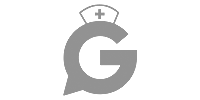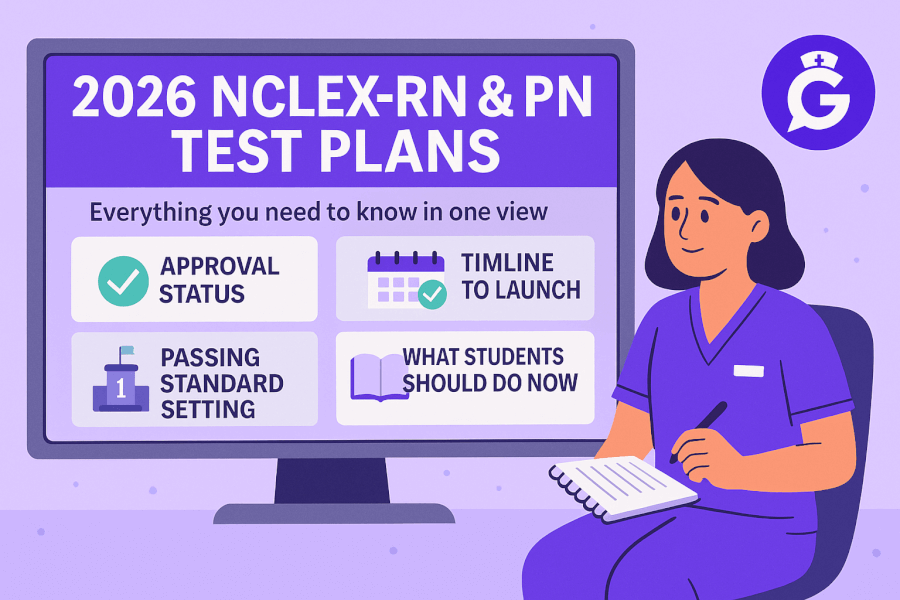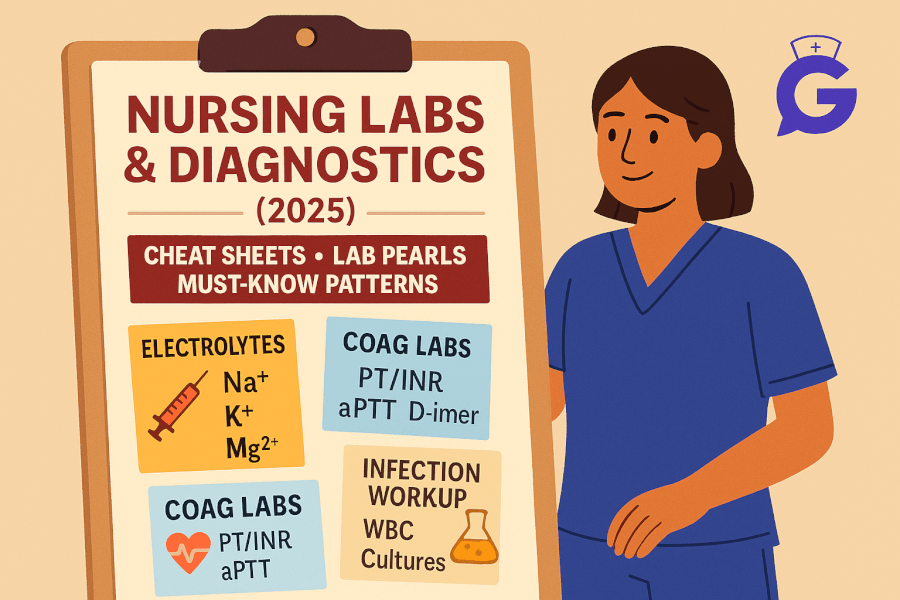Thinking about becoming a Registered Nurse (RN) in 2025? You’re in the right place. This comprehensive, step-by-step guide walks you through every stage of launching your nursing career—from choosing the best education path to acing the NCLEX-RN, securing your license, and landing your dream job. Packed with insider tips, salary insights, and the latest trends, this is your go-to resource for starting a rewarding RN career in a field that’s more in demand than ever.
1. What Is a Registered Nurse?
Registered Nurses (RNs) are the backbone of healthcare, delivering hands-on patient care, coordinating treatment plans, and advocating for wellness. They educate patients and families about managing chronic conditions, administer medications, and provide emotional support during critical moments. RNs work everywhere—from bustling hospital wards and quiet rural clinics to schools, corporate offices, and even patients’ homes via telehealth.
Daily Duties: Expect to monitor vital signs, collaborate with physicians, operate medical equipment, and document care in electronic health records (EHRs). In 2025, RNs increasingly use tech like AI diagnostics and wearable health monitors, blending traditional skills with cutting-edge tools.
Why Become an RN? Beyond job stability and competitive pay, nursing offers purpose. You’re not just clocking in—you’re changing lives. With over 3.1 million RNs in the U.S., it’s a career with endless growth potential.
2. Step 1: Choose the Right Nursing Degree (ADN vs. BSN)
Your RN journey begins with education. To become a Registered Nurse, you’ll need a nursing degree from an accredited program. The two main paths—ADN and BSN—differ in time, cost, and career impact. Here’s how to decide:
- ADN (Associate Degree in Nursing): A 2-year program offered at community colleges, the ADN is the quickest route to RN licensure. It covers essentials like anatomy, pharmacology, and patient care. Cost: $6,000–$20,000 total. Drawback: Some employers (especially hospitals aiming for Magnet status) prefer BSN grads, limiting advancement.
- BSN (Bachelor of Science in Nursing): A 4-year degree at universities, the BSN dives deeper into research, leadership, and community health. Cost: $40,000–$100,000. Perks: Higher pay (10–15% more than ADN), better job prospects, and a stepping stone to advanced roles like Nurse Practitioner. In 2025, 80% of employers prefer BSNs, per AACN.
- Accelerated BSN (ABSN): Already have a bachelor’s in another field? ABSN programs fast-track you to RN status in 12–18 months. They’re intense but ideal for career switchers. Cost: $15,000–$50,000.
Bridge Programs: LPNs or CNAs can opt for ADN-to-BSN or LPN-to-RN tracks, often online, to level up efficiently.
2025 Insight: With healthcare systems prioritizing evidence-based practice, BSN demand is surging. Some states now offer tuition incentives for BSN students committing to high-need areas.
SEO Tip: Search “ADN vs. BSN nursing programs” to compare local options and costs.
3. Step 2: Enroll in an Accredited Nursing Program
Accreditation ensures your degree meets national standards and qualifies you for the NCLEX-RN. Choose a program approved by your state’s board of nursing and accredited by:
- ACEN (Accreditation Commission for Education in Nursing): Focuses on practical and technical nursing programs.
- CCNE (Commission on Collegiate Nursing Education): Accredits BSN and higher-level programs, emphasizing academic rigor.
Curriculum Highlights: Expect courses in anatomy, physiology, microbiology, pharmacology, and psychology, plus 400–800 hours of clinical rotations in hospitals or clinics. In 2025, many programs integrate virtual reality (VR) simulations and telehealth training to mirror modern practice.
Admission Requirements: A high school diploma or GED, minimum GPA (often 2.5–3.0), and prerequisites like chemistry or biology. Competitive programs may require TEAS (Test of Essential Academic Skills) scores, essays, or healthcare experience.
Pro Tip: Apply to multiple schools—acceptance rates vary (30–80%). Online/hybrid options are booming in 2025, offering flexibility for working students.
4. Step 3: Pass the NCLEX-RN Exam
The National Council Licensure Examination for Registered Nurses (NCLEX-RN) is your gateway to licensure. This computer-adaptive test (75–145 questions) assesses your ability to think critically and make safe clinical decisions across four areas: safe care, health promotion, psychosocial integrity, and physiological integrity.
Prep Strategies:
- Practice Tests: Use resources like UWorld, Kaplan, or ATI for realistic questions (aim for 1,000+).
- Study Plans: Dedicate 6–12 weeks, focusing on weak areas like pharmacology or pediatrics.
- Test Day: Arrive early, bring ID, and expect 2–6 hours. The test adapts—harder questions mean you’re doing well.
Pass Rates: In 2024, first-time pass rates hovered at 85% for U.S.-educated candidates. In 2025, expect updated questions reflecting telehealth and AI tools.
Cost: $200 (plus state fees). Retakes are allowed after 45 days if needed.
📘 25 NCLEX Study Tips That Actually Work
Struggling to stay focused or overwhelmed by where to begin? This guide gives you 25 proven NCLEX study strategies—including case studies, mnemonics, prep schedules, and more.
🚀 Read the Full Guide5. Step 4: Get Licensed in Your State
After passing the NCLEX-RN, apply for licensure through your state’s board of nursing. Requirements vary but typically include:
- Official transcripts
- Background check (fingerprinting in most states)
- Application fee ($50–$200)
Nurse Licensure Compact (NLC): Over 40 states participate in the NLC in 2025, letting you practice across borders with one multistate license. Non-NLC states (e.g., California) require separate licenses.
Processing Time: 4–8 weeks. Some states offer temporary permits to work sooner.
Renewal: Licenses renew every 1–2 years, often requiring 15–30 continuing education units (CEUs).
SEO Tip: Search “RN licensure [your state]” for specific rules and forms.
6. Step 5: Land Your First RN Job
License in hand, you’re ready to join the workforce! Entry-level RN roles span specialties and settings. Here’s where to start:
- Medical-Surgical Nurse: Broad experience in hospitals, perfect for building skills ($80,000+).
- Emergency Room Nurse: Fast-paced, high-adrenaline work ($85,000+).
- Pediatric Nurse: Care for kids in clinics or hospitals ($82,000+).
- Home Health Nurse: One-on-one care with flexible schedules ($78,000+).
Job Search Tips:
- Resources: Job boards (Indeed, Nurse.com), hospital career pages, and LinkedIn.
- Residency Programs: New grad programs (e.g., Vizient/AACN) offer 6–12 months of mentorship—hospitals love them.
- Networking: Leverage clinical rotation contacts, professors, or nursing associations (ANA).
2025 Trend: Telehealth RN roles are rising, requiring tech skills and offering remote flexibility.
7. RN Salary & Job Outlook in 2025
RNs enjoy strong earning potential and job security in 2025, fueled by an aging population, chronic disease rates, and healthcare tech advancements.
- Average Salary: $85,600 (national average, BLS 2025 estimate). BSN holders often earn $90,000+.
- Top-Paying States: California ($125,000), Hawaii ($110,000), Oregon ($105,000), Alaska ($100,000), Massachusetts ($98,000).
- Job Growth: 6% from 2022–2032 (193,000 new jobs), per BLS—faster than the all-occupation average.
Boosting Pay: Night shifts, overtime, and unionized hospitals add 10–20%. Rural areas offer loan forgiveness perks.
Outlook: Demand spikes in geriatrics, telehealth, and outpatient care as hospitals adapt post-pandemic.
8. Frequently Asked Questions
Can I become an RN without a degree?
No. An accredited ADN or BSN is mandatory, followed by the NCLEX-RN. Diploma programs (once common) are nearly extinct in 2025.
Is it better to get a BSN or ADN?
Both qualify you as an RN, but BSNs win for long-term value—higher salaries, leadership roles, and employer preference (80% of hospitals favor BSNs). ADN is faster and cheaper but may require a bridge program later.
How long does it take to become an RN?
ADN: 2 years. BSN: 4 years. ABSN: 12–18 months with a prior degree. Add 2–6 months for NCLEX prep and licensing.
Is the NCLEX-RN exam hard?
It’s tough but manageable. The adaptive format tests critical thinking over rote memory. With 6–12 weeks of prep (UWorld, Kaplan), most pass first try—85% success rate in 2024.







